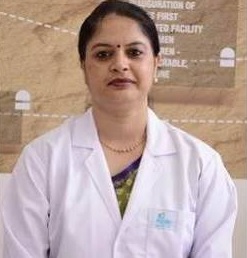Surgical Abortion: Procedure, Side Effect, and Recovery
Dr. Arti Sharma

Treatment Duration
5 Minutes
------ To ------10 Minutes
Treatment Cost
₹ 18,000
------ To ------₹ 75,000

Table of Contents
- What is Surgical Abortion?
- Who needs a Surgical Abortion?
- How is Surgical Abortion performed?
- What to expect before and on the day of Surgical Abortion?
- What to expect after Surgical Abortion?
- Benefits of Surgical Procedure
- Risks and Complications of Surgical Abortion
- Risks of Delaying Surgical Abortion
- Cost of Surgical Abortion
A Surgical Abortion is a medical procedure to terminate an undesired pregnancy by removing the foetus and placenta from the uterus through gentle suction. Women whose gestation period is more than 63 days can undergo this procedure. The significant advantage of this procedure is that it is faster and less painful than medical abortion.
Due to the term ‘surgery’ attached to this procedure, it is generally considered dangerous. However, a surgical abortion is minimally invasive and highly safe. It has fewer risks of complications when carried out by trained medical professionals.
|
Surgery name |
Surgical Abortion |
|
Alternative name |
Suction Aspiration Abortion |
| Diseases Treated | Pregnancy |
|
Benefits of the surgery |
High success rate, 5-10 mins procedure |
|
Treated by |
Gynaecologist and Obstetrician |
You can check Surgical Abortion Cost here.
What is Surgical Abortion?
A surgical abortion is a procedure that terminates a pregnancy. In the first trimester, surgical abortion is done via vacuum aspiration and in the second trimester, it is done through a D&C procedure. Vacuum aspiration takes 5-10 minutes, whereas D&C only takes 15-20 minutes.
Anatomy and Physiology of Uterus
The uterus, generally known as the womb, is an inverted pear-shaped muscular organ of the female reproductive system.
The primary function of the uterus is to house and nourish a fertilised egg until it matures into a foetus and is ready to be delivered.
The uterus comprises four regions:
- Fundus: It is a broad curved area in the upper part of the uterus where the fallopian tubes connect.
- Body: It starts directly below the fallopian tubes and continues downwards until the uterine wall and cavity begin to narrow.
- Isthmus: It is the lower neck region of the uterus.
- Cervix: The lowest section of the uterus. It extends downward from the isthmus until it opens in the vagina.
The uterine cavity opens in the vaginal cavity. The average size of the uterus is 6-8 cm (2.4 to 3.1 inches), and its wall thickness is approximately 2-3 cm (0.8 to 1.2 inches). It expands during pregnancy and returns to its standard size after birth.
Surgical Abortion Videos by HexaHealth
Expert Doctors (10)
NABH Accredited Hospitals (10)


Who needs a Surgical Abortion?
Surgical abortion is a fast and reliable method to terminate a pregnancy. It requires fewer visits and one must go for surgical abortion if they:
- have decided not to continue the pregnancy
- are 12-14 weeks pregnant
- want to terminate their pregnancy in a hospital setting or a clinic
- have tried medical abortion, but it failed to end the pregnancy
- have any allergies related to Mifeprex and Cytotec - medicines used in medical abortion
- have a medical condition that is life-threatening for themselves and the foetus
How is Surgical Abortion performed?
Surgical abortion can be performed using two procedures depending on the stage of pregnancy.
Vacuum Aspiration
Surgical abortion is usually performed using a gentle suctioning technique called vacuum aspiration. During the procedure, the health care provider dilates the cervix (the opening of the uterus) and places a small suction tube inside the uterus. Suction removes the foetus and other pregnancy-related materials (pregnancy tissue). The procedure typically takes about five to ten minutes to complete. The procedure is done in the following steps:
- Examines the vagina of the patient.
- Cleans the vagina and cervix with sterile gauze.
- Inserts a speculum to view inside the vagina.
- Numbs the patient’s cervix, so she doesn’t feel any pain or discomfort.
- Insert dilators to open the cervix.
- Insert a tube into the patient’s womb and use a special vacuum to perform gentle suction and pull out the pregnancy tissue.
- The patient may experience cramping during the procedure. It is normal and generally reduces after the tube is removed from the uterus.
Dilation and Evacuation
The doctors may perform Dilation and Evacuation techniques if the patient has been pregnant for more than 16 weeks. It is a modified procedure that involves stronger suction and additional surgical tools to remove the pregnancy tissue. The procedure is done in the following steps:
- The doctor may induce general or local anaesthesia along with giving a sedative to decrease pain and discomfort.
- After the doctor examines the vagina and uterus with the help of a speculum, he or she inserts dilators to stretch the cervix.
- Then a vacuum tube is placed inside the uterus along with a suction pump, including other medical tools such as a cannula to remove the pregnancy tissue.
- Finally, a spoon or scoop-like metal instrument known as a curette is used to scrape the uterus lining to ensure no residuals are present.
What to expect before and on the day of Surgical Abortion?
Prior to surgical abortion, the doctor or the surgeon will discuss and prepare the patient for the surgery. These steps often involve:
Before Surgical Abortion
Before the procedure, the patient may have to undergo the following tests:
- A urine test to confirm the pregnancy.
- An ultrasound to check for how long the patient has been pregnant.
- The doctor may also require the patient’s blood test to know her blood type. The blood test prepares the patient for a special shot known as Rh(D) immunoglobin to prevent any risks or problems in future pregnancies.
Before carrying out the procedure, the doctor discusses the details of the procedure and what the patient can expect during and after the abortion. The patient must ensure to follow all the instructions given by the doctor before the procedure.
The following are some things to consider while preparing for a surgical abortion:
- The patient can ask a family member or a friend to drive her home after the surgery.
- The patient must take the pain or dilation medication if prescribed by the doctor.
- She must ask the doctor if fasting is required before the procedure.
- If the patient takes over-the-counter pain relievers such as acetaminophen or ibuprofen, she must ask the doctor when to take them.
- Alcohol must be avoided before the day of the procedure.
- The patient must buy high-absorbant sanitary napkins to contain bleeding after the procedure.
- If the patient doesn’t use OTC pain relievers, she can buy them before the procedure to manage pain after the termination of pregnancy.
- The patient must keep a heating pack ready to help reduce the pain.
On the Day of Surgical Abortion
- Before starting the surgical procedure, the doctor may give the patient some oral pain medications to control the cramping.
- Other medications may also be given to soften the cervix and make dilation easier.
- To stretch the cervix, the doctors sometimes insert small dilators a few hours before the surgery. These dilators grow in size upon absorbing the fluids from the body, thus stretching the cervix.
- Anaesthesia is often not required to carry out a surgical abortion. But the patient is given a sedative to remain relaxed and in a sleep-like position during the procedure.
- The patient is made to change into a hospital gown.
- She is also asked to lie down on the examination table. The patient’s legs will rest in supports known as stirrups so that the legs are positioned in a way that the doctor can examine the vagina and cervix.
What to expect after Surgical Abortion?
The following things can be expected after a surgical abortion procedure:
The recovery process at the hospital
- The patient recovers physically within 1-2 days after the procedure, depending on the stage of the pregnancy. Cramps usually last for 1-2 days. However, vaginal bleeding can last for a week to ten days.
- The doctor examines the patient’s uterus immediately after the procedure to check if the pregnancy tissue is completely removed.
- Once the doctor confirms the procedure’s success, the patient is moved to a recovery room to rest.
- The patient may be given some medicines to help the uterus contract so that the bleeding can be reduced.
- The doctor may also prescribe antibiotics to reduce the risk of infection.
The recovery process at home
- Heavy bleeding and cramping are common after the procedure. The patient may experience bleeding (like periods), blood clots, or spotting. Spotting may last for several weeks.
- Even if the patient starts feeling better, she must complete the course of antibiotics prescribed by the doctor to avoid any risk of infection.
- Avoid lifting heavy weights.
- To prevent infection, the patient must avoid vaginal intercourse and the use of tampons for at least two weeks after the procedure.
- The patient can get pregnant right after the procedure, so she must take necessary precautions, especially during the first month after the procedure. The periods usually occur four to six weeks after the procedure.
First Follow-Up Appointment
Depending on the patient’s situation, the doctor may call the patient for a follow-up visit within a few weeks. This visit is necessary to ensure that the patient is healing properly. During the visit, the doctor examines the uterine size and bleeding. He or she also checks if there are any signs of infection.
Benefits of Surgical Procedure
The surgical abortion procedure is more successful and has a lower failure rate. It is a painless and reliable method of ending a pregnancy.
- The success rate of surgical abortion is around 99%, depending on the experience of the medical professionals.
- The patient experiences less bleeding and abdominal pain compared to medical abortion.
- The length of recovery time is also less than medical abortion. If the gestation is small, the patient can recover in just half an hour, and in the case of advanced pregnancies, the patient can resume normal activities in 2-3 hours.
- It only takes 5-10 minutes to end a pregnancy.
- It involves fewer complications.
Risks and Complications of Surgical Abortion
Surgical abortions are safe procedures and rarely involve any risk. However, the possible risks and complications of surgical abortion include:
- Damage to the cervix or uterus
- Infection of the uterus and fallopian tubes
- Accidental perforation in the uterus due to the use of any instrument used in the procedure
- Uncontrolled bleeding
- Allergic reaction to medicines or anaesthesia
- Incomplete removal of the pregnancy tissue requires the procedure again
When consultation is needed
In case the patient experience any of the following symptoms, she must seek medical attention immediately:
- The bleeding is so excessive that the patient has to change her pad once an hour for two or more hours.
- The flow of blood clots is larger than the size of a lemon for more than two hours.
- Foul-smelling vaginal discharge.
- Intense pain and cramping that is not getting better even after 48 hours of the procedure
- Pregnancy symptoms persist after one week.
- Fever
Risks of Delaying Surgical Abortion
According to the Medical Termination of Pregnancy (Amendment Act), 2021, the legal gestational limit for terminating a pregnancy is 20-24 weeks in India. All women, including widows and unmarried girls, who wish to end an unwanted pregnancy can opt for MTP. The risks of delaying a surgical abortion could be:
- It will increase the chance of risks and complications after the procedure. The procedure of terminating pregnancy gets more complicated as the size of the foetus increases.
- It can also lead to the risk of future miscarriage.
Cost of Surgical Abortion
The cost of a surgical abortion ranges from ₹10,000 to ₹30,000. The cost varies based on the following factors:
- Type of surgical abortion surgery
- Age of the patient
- The medical condition of the patient
- The type of hospital facility availed - individual room or shared
|
Procedure Name |
Cost Value |
|
Surgical Abortion |
₹10,000 to ₹30,000 |
Frequently Asked Questions (FAQ)
What are the myths versus facts about surgical abortion?
- Myth: Surgical abortions are life-threatening for women.
Fact: Many people believe surgical abortions are dangerous or life-threatening as the procedure requires certain surgical instruments that bear the risk of damaging the inner lining of the uterus. But it is not true. Surgical abortions are a safe method to end unwanted pregnancies with rare to hardly any cases of complications when performed by experienced medical professionals.
- Myth: Women undergoing surgical abortions are more exposed to the risk of breast cancer.
Fact: No scientific research has found links between surgical abortion and breast cancer. This myth has been propagated to discourage women from having an abortion.
- Myth: The surgical abortion method can be extremely painful.
Fact: Surgical abortions are not painful when performed under proper medical supervision. Healthcare providers may use general or local anaesthesia for the procedure. The doctor also prescribes pain relievers to manage the pain effectively once the abortion is complete.
- Myth: Surgical abortions can lead to infertility in women.
Fact: It is not true. Many women often believe that the use of certain instruments and methods required in surgical abortion can harm their intimate organs and may lead to infertility. If the patient visits a registered clinic and the procedure is performed under trained doctors, surgical abortions are very safe and do not lead to infertility.
- Myth: The foetus in the womb experiences pain during the surgical abortion.
Fact: Humans experience the sensation of pain due to the neocortex. The neocortex is a part of the nervous system responsible for attention, thought, perception, and memory. The foetus doesn’t develop this part of the nervous system until the 29th or 30th week of the pregnancy. This is why there is no way that the foetus will experience any pain during the surgical abortion.
- Myth: Getting an abortion is selfish.
Fact: Getting an abortion is a deeply personal decision. There can be many factors leading to this decision. If a woman chooses her body and goals over having an unwanted pregnancy, it is her personal choice, and she is not being selfish.
What is Surgical Abortion?
A surgical abortion is a procedure to end a pregnancy. In a surgical abortion, the cervix (uterine entrance) is dilated, and a tiny suction tube is inserted into the uterus. The foetus and associated pregnancy tissue are suctioned out of the uterus.
Is Surgical Abortion a major surgery?
Abortion through surgery is a minor procedure. It is a very safe and simple procedure to end a pregnancy.
Does surgical abortion requires anaesthesia?
Surgical abortion requires a low dose of general anaesthesia. It is necessary to reduce the pain and distress caused by the procedure.
Who performs a surgical abortion?
The registered medical practitioner decides whether an abortion is necessary and performs it. If the pregnancy has not passed the first trimester's 12-week mark, one doctor's opinion is required for surgical abortion. If the gestation period is longer than 12 weeks but is still in the first trimester, the opinion of two doctors is required.
Is surgical abortion painful?
Before the treatment, anaesthesia will be administered to lessen discomfort, but cramping may still occur. Although cramping can continue for a few days, most people can return to their regular routines in just one or two days.
How long does it take to recover from surgical abortion?
Individual recovery times after abortions differ. A person generally recovers in a few days if they have an uncomplicated first-trimester abortion.
What are the benefits of surgical abortion?
The benefits of Surgical Abortion are as follows:
- Surgical abortion has a success rate of about 99%.
- Compared to medical abortion, the patient has less abdominal bleeding and discomfort.
- The recovery period is also shorter. When the gestation is short, the patient can recover in just 30 minutes, and when the pregnancy is advanced, the patient can return to their regular activities in 2–3 hours.
- The duration of termination takes about five to ten minutes.
There are fewer complications.
How can I tell if a medical abortion resulted in a fully terminated foetus?
You must see your doctor, who will check and ensure that the foetus has been completely terminated. You may also undergo an ultrasound for confirmation.
Which type of abortion; medical or surgical is preferable?
The length of the pregnancy and personal preference determine whether to have a medicinal or surgical abortion. Medical abortion involves numerous visits, whereas surgical abortion can be done in one visit. The doctor can only guide you on which type of abortion you must go through to prevent any risk.
How much will I bleed after surgical abortion? What should I do to stop the bleeding?
Use sanitary towels during this period because most women bleed for one to two weeks. The bleeding is considered like an ordinary period (there may be some blood clots). You can get spotting up until your next period. Some women won't bleed again until their next period following the surgical abortion.
When can I start having sex?
As soon as you feel that you are fully recovered from the abortion, you can engage in sexual activity. If you don't want to get pregnant, utilise contraception since you can become pregnant immediately following therapy.
What are the risks associated with surgical abortion?
Abortions performed surgically are generally risk-free and safe procedures. But the risks and issues that could arise from a surgical abortion include:
- A uterine or cervix injury
- Uterine and fallopian tube infection
- Accidental uterine perforation brought caused by the use of a surgical instrument
- Excessive bleeding
Medication or anaesthesia-related allergies
Do I have to stay in the hospital after surgical abortion?
You need only 3 to 4 hours at the hospital or clinic on the day of your treatment. Most abortion patients do not typically need to spend the night in the clinic or hospital, although you may need to make appointments on various days.
Does insurance cover surgical abortion?
Yes, all health insurance plans cover surgical abortion. Paperwork is facilitated by our team on your behalf ensuring smooth approval and a cashless facility. Contact HexaHealth for a simple cashless and hassle-free experience.
What is the cost of a surgical abortion?
The cost of surgical abortion differs due to factors including the patient’s age, the type of procedure done, techniques and equipment used, the type of hospital, and the admission room that a patient opts for.
Surgical Abortion Cost Videos
Last Updated on: 3 April 2024
Reviewer

Dr. Arti Sharma
MBBS, DNB Obstetrics and Gynaecology, Diploma In Cosmetic Gynaecology
9 Years Experience
Dr Arti Sharma is a well-known Obstetrician and Cosmetic Gynaecologist currently associated with Aesthetica Veda in Bengaluru. She has 9 years of experience in Obstetrics and Cosmetic Gynaecology and worked as an expert Obstetrician...View More
Author

Charu Shrivastava
BSc. Biotechnology I MDU and MSc in Medical Biochemistry (HIMSR, Jamia Hamdard)
3 Years Experience
Skilled in brand marketing and SEO-driven medical content that educates and engages patients, healthcare professionals, and the general public. With medical writing and proofreading expertise, she ensures accuracy,...View More
Surgical Abortion in Top Cities
Surgical Abortion Cost in Top Cities
Other Treatments in Your City























